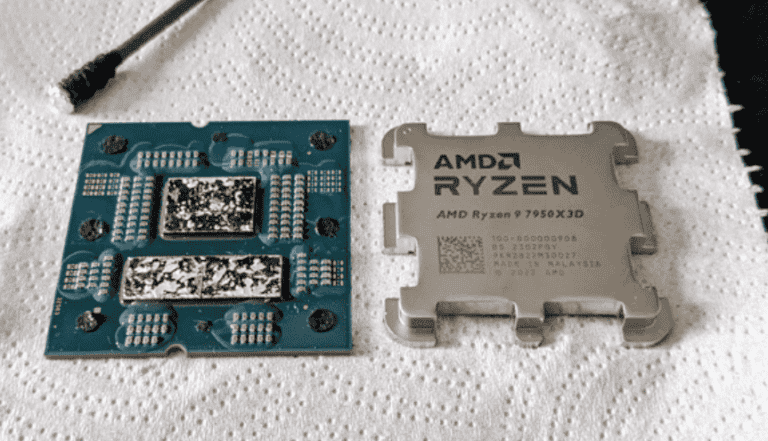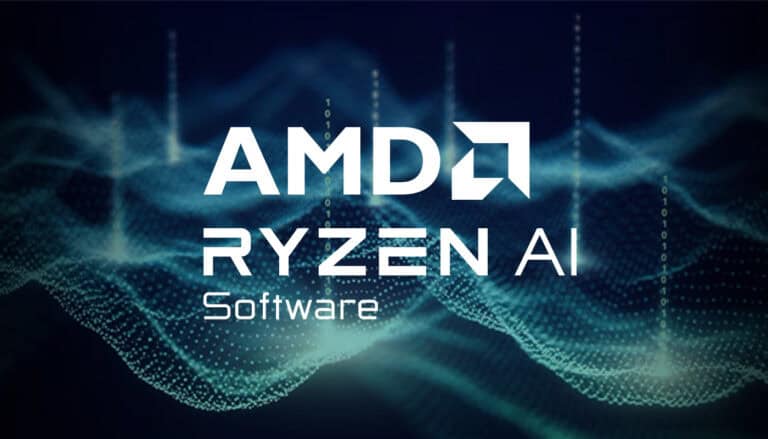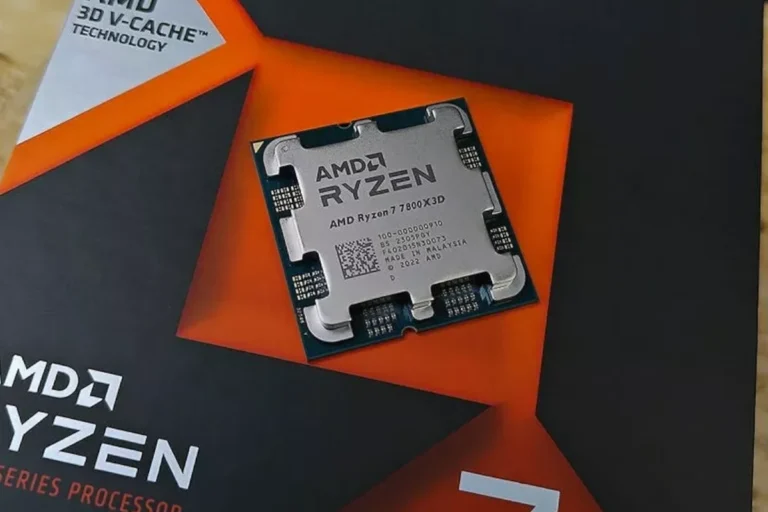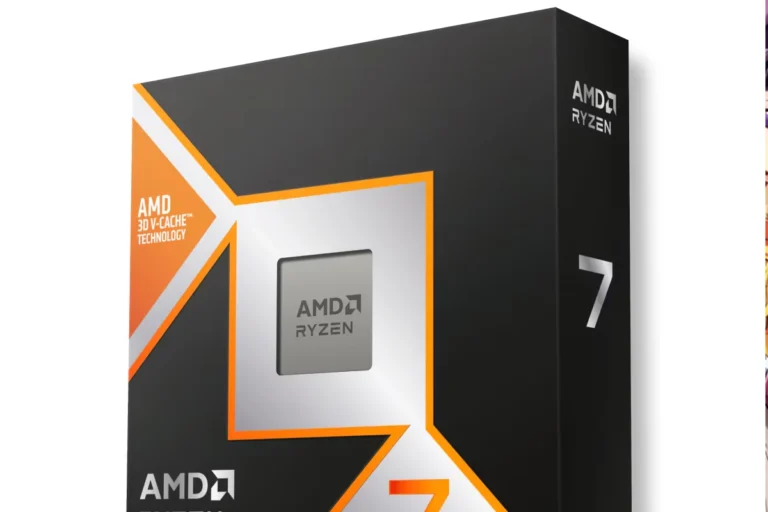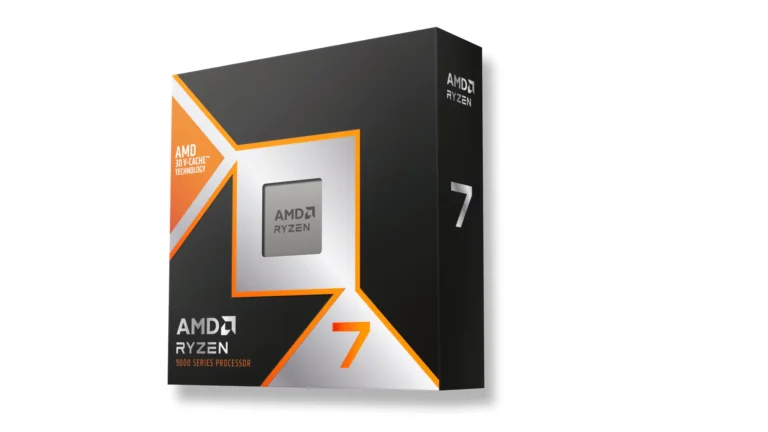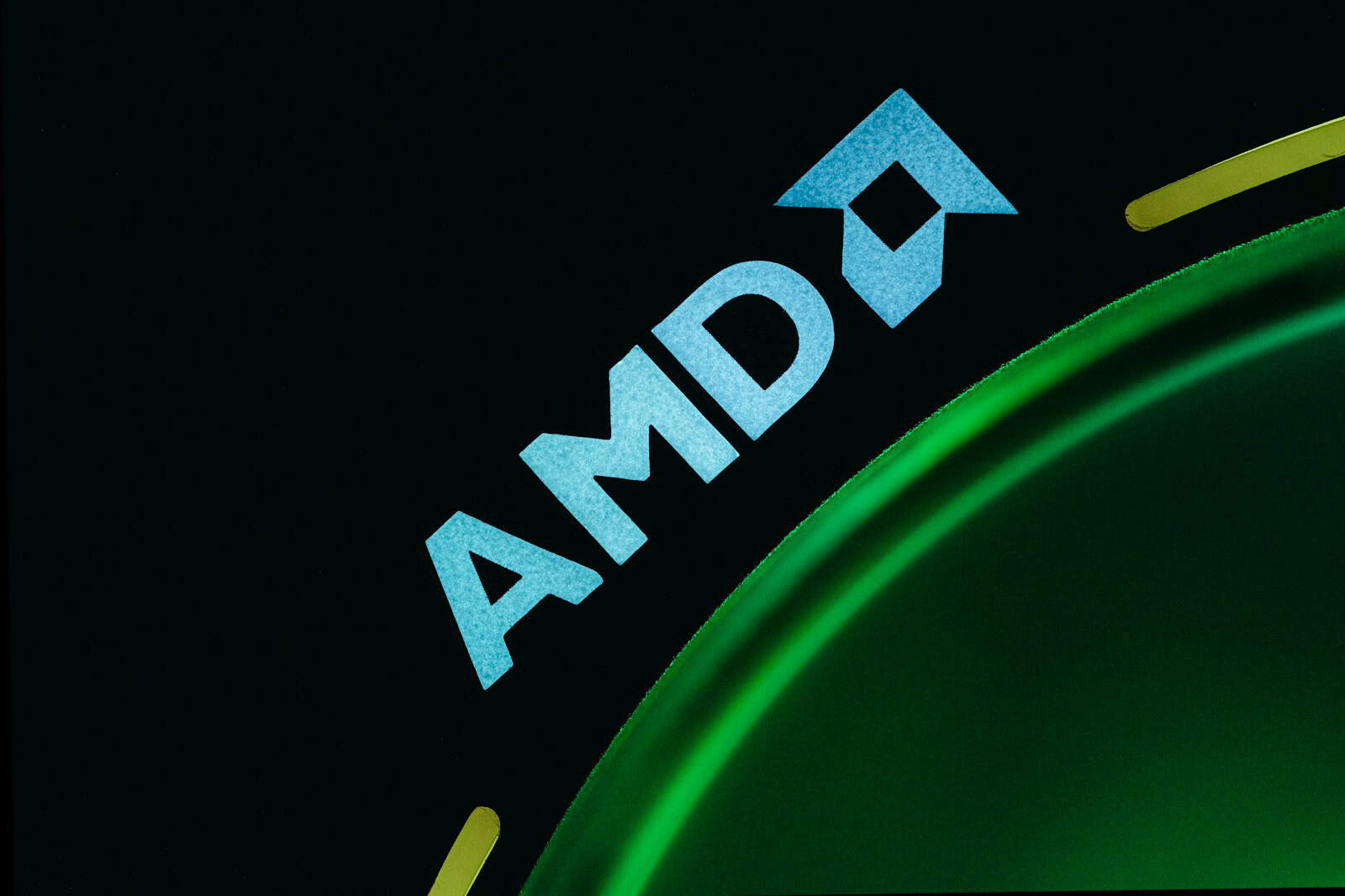
Advanced Micro Devices (AMD) entered 2025 with a mixed financial report: soaring overall revenue, but a sharp decline in one of its flagship sectors. In its Q1 2025 earnings release, AMD reported a 30% year-over-year drop in gaming revenue, falling to $647 million.
The primary factor behind this downturn? A steep falloff in semi-custom chip sales—primarily the custom processors used in gaming consoles like the PlayStation 5 and Xbox Series X/S.
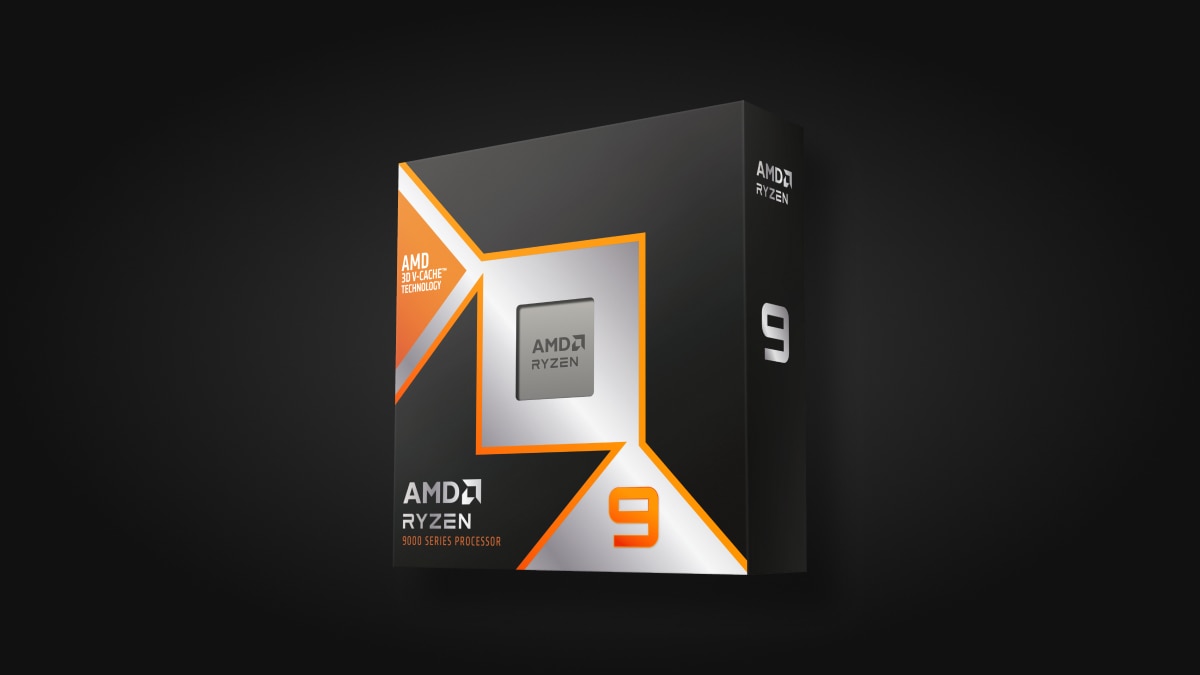
Console Lifecycle Slowdown Hits Hard
This decline isn’t a surprise to analysts familiar with the console hardware cycle. The PlayStation 5 and Xbox Series consoles are now well into their lifecycle, and hardware refreshes or next-generation models have yet to be formally announced. This mid-cycle phase often leads to decreased chip demand from console makers, especially as install bases saturate and hardware revisions slow.
Moreover, global economic uncertainty and reduced consumer discretionary spending have also softened demand for gaming consoles and accessories. Combined with continued supply constraints and regional fluctuations, these factors have created a difficult environment for AMD’s console-related revenue streams.
Radeon’s Resurgence: RX 9070 XT Breaks Records
Despite the slump in semi-custom chip sales, AMD’s discrete graphics business saw a notable bright spot. The company launched its new RDNA 4-based Radeon RX 9070 and RX 9070 XT graphics cards in Q1. The RX 9070 XT in particular had a record-breaking first week—selling more than 10 times the volume of any previous Radeon GPU at launch. Early performance benchmarks and user reviews praised the card for offering a compelling balance of power and efficiency, especially at its price point, positioning it as a viable alternative to NVIDIA’s mid-to-high-end offerings.
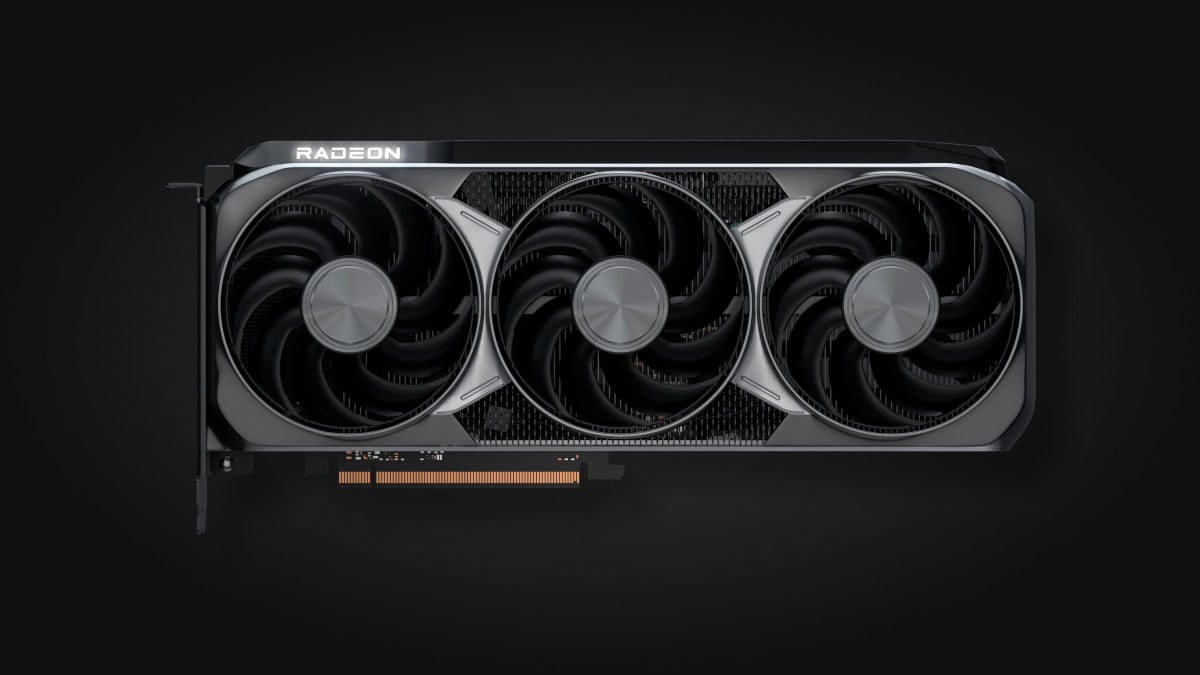
This success in the GPU segment suggests AMD still has considerable momentum in PC gaming, even as its console revenue softens.
Ryzen Lifts the Client Segment
While gaming revenue declined, AMD’s broader business posted impressive growth. Total company revenue hit $7.4 billion in Q1 2025, a 36% year-over-year increase—fueled largely by its Client and Data Center segments.
The Client segment, which includes desktop and laptop Ryzen processors, jumped 68% to $2.3 billion. Much of that growth stemmed from widespread adoption of AMD’s new Zen 5 architecture, which powers its latest generation of CPUs. These chips have found favor among gamers, content creators, and enterprise customers alike, thanks to their blend of efficiency, performance, and competitive pricing.
Ryzen’s continued strength not only offset the gaming decline but highlighted AMD’s ability to diversify and maintain momentum across product categories.
The Road Ahead: RDNA 4 and Beyond
Looking forward, AMD is banking on the continued success of its RDNA 4 GPU lineup to reinvigorate its gaming segment. With additional Radeon models expected to arrive later this year, the company is targeting gamers who seek high-performance graphics at a lower cost than competing NVIDIA options. There’s also increased strategic focus on handheld gaming and PC streaming platforms, including support for Steam Deck-like devices and Windows-based portables powered by AMD chips.
AMD is also betting big on cloud gaming infrastructure. While still nascent, cloud gaming has the potential to reshape the gaming industry’s revenue model. AMD is well-positioned here too, supplying the processors and GPUs that power many cloud servers for platforms like Xbox Cloud Gaming and other emerging services.
Regulatory Headwinds in AI and Gaming
However, AMD isn’t without challenges. The company has flagged that U.S. export restrictions could hamper its ability to sell AI GPUs to China, potentially resulting in a $1.5 billion revenue loss over time. While this primarily affects AMD’s data center ambitions, it underscores the geopolitical and regulatory risks tech companies face when expanding in global markets.
Similarly, competition in gaming remains fierce. NVIDIA’s continued dominance in the GPU space and Intel’s push into graphics with Arc present constant pressure. AMD must continue to execute flawlessly across hardware, drivers, and software support to gain long-term market share.
Overall
AMD’s Q1 2025 results show a company in transition. The drop in gaming revenue—while notable—was anticipated due to console market dynamics. More importantly, AMD’s strong growth in other areas and early signs of a rebound in GPU sales suggest this is more of a temporary dip than a lasting downturn.
As the company expands into new gaming form factors and shores up its presence in the PC and cloud sectors, AMD appears poised to weather the gaming slump and capitalize on broader industry trends. The path forward will depend on continued product innovation, market agility, and successful navigation of geopolitical challenges—but the groundwork for a bounce-back in gaming is already being laid.
Understanding Laptop Processors
Choosing the right processor for your laptop can feel overwhelming with so many options available today. The market is constantly evolving with new releases from Intel, AMD, and Apple competing for the top spot. For most users in 2025, the AMD Ryzen AI 300-series offers the best balance of performance and efficiency for high-power laptops, while Intel Core Ultra 100-series processors are ideal for budget and mid-range options.
When shopping for a new laptop, the CPU is arguably the most important component to consider. It affects everything from battery life to how quickly your applications run. The latest processor rankings show AMD’s Ryzen 9 models dominating the high-performance category, while Intel’s Core Ultra lineup provides excellent value for everyday computing tasks. Your choice should align with your specific needs, whether that’s gaming, content creation, or basic productivity.
Choosing the right processor is crucial for your laptop’s performance. The CPU serves as the brain of your computer, handling everything from basic tasks to complex computations.
Core Count and Multithreading
Modern laptop processors come with multiple cores, allowing them to handle several tasks simultaneously. Think of cores as separate workers within your CPU—more workers means more tasks completed at once.
Most laptops today offer at least 4 cores, but higher-end models pack 8, 10, or even more cores. If you edit videos or run complex software, higher core counts provide better performance.
Multithreading technology (called Hyper-Threading by Intel or SMT by AMD) creates virtual cores that further improve multi-threaded performance. This technology allows each physical core to handle two processing threads simultaneously.
For basic tasks like web browsing, a 4-core processor is sufficient. For demanding work like 3D rendering or video editing, look for processors with 6+ cores and multithreading capabilities.
Clock Speed and Overclocking
Clock speed measures how many operations your processor can perform per second, expressed in GHz (gigahertz). Higher numbers generally mean faster performance for single-threaded tasks.
Base clock speed indicates the processor’s standard operating frequency, while boost clock shows the maximum speed it can reach for short periods. For example, a processor might have a 2.4GHz base clock but boost up to 4.8GHz when needed.
Some laptop processors allow for overclocking—pushing speeds beyond factory settings. However, laptop overclocking is limited compared to desktops due to heat and power constraints.
When comparing processors, remember that clock speed isn’t the only performance factor. Architecture improvements often mean newer generations perform better even at lower clock speeds.
Power Consumption and Efficiency
Laptop processors must balance performance with power consumption. More powerful CPUs typically use more energy, affecting battery life and heat output.
Processors are rated by TDP (Thermal Design Power), measured in watts. Lower TDP chips (15W or less) offer better battery life but less performance. Higher TDP processors (45W+) deliver desktop-like performance but drain batteries faster.
Modern CPUs include power-saving features that reduce clock speeds when full performance isn’t needed. This power efficiency is crucial for extending battery life during light tasks.
AMD’s recent Ryzen AI 300-series processors are known for excellent efficiency, while Intel’s Core Ultra processors also focus on balancing performance with battery life.
Integrated vs Discrete Graphics
Most laptop processors include integrated graphics capabilities—GPU cores built directly into the CPU. These handle basic graphics tasks without needing a separate graphics card.
Intel’s Iris Xe and AMD’s Radeon graphics have improved significantly, allowing casual gaming and basic content creation. However, they still can’t match dedicated solutions for demanding tasks.
For serious gaming or professional graphics work, you’ll want a laptop with discrete graphics—a separate GPU that handles visual processing independently from the CPU.
The relationship between your processor and graphics solution matters. A powerful CPU paired with weak graphics (or vice versa) creates a bottleneck where one component limits the other’s performance.
When choosing, consider your specific needs: integrated graphics save battery life and reduce costs, while discrete options deliver significantly better performance for graphics-intensive tasks.
Leading Processor Manufacturers
The laptop processor market is dominated by two major players that design CPUs with different strengths and price points. Understanding the key differences between these manufacturers can help you make an informed decision when purchasing your next laptop.
Intel Processors Overview
Intel has been a dominant force in laptop CPUs for decades, offering reliability and consistent performance. Their processor lineup is organized in distinct tiers, making it easier for you to choose based on your needs.
The Core i3 processors are budget-friendly options ideal for basic tasks like web browsing and document editing. For more demanding users, Core i5 CPUs offer an excellent balance of performance and value.
If you need more power, the Core i7 series delivers high-end performance for gaming and content creation. The top-tier Core i9 processors provide exceptional performance for professionals with intensive workloads.
Intel CPUs are known for their thermal efficiency and compatibility with a wide range of software. Their integrated graphics have improved significantly in recent generations, though they still lag behind AMD in this area.
AMD Processors Overview
AMD has emerged as a formidable competitor in recent years with their Ryzen processors offering excellent performance at competitive prices. The Ryzen 9 7945HX currently tops performance charts for laptop processors, showing AMD’s technical prowess.
AMD’s laptop processors are organized into Ryzen 3, 5, 7, and 9 series, comparable to Intel’s tiering system. Ryzen 5 processors deliver great mid-range performance, while Ryzen 7 offers strong capabilities for gaming and content creation.
The standout advantage of AMD CPUs is their multi-core performance, making them excellent for multi-tasking and applications that can utilize multiple cores simultaneously. Video editing, 3D rendering, and virtual machine use all benefit from this strength.
AMD processors typically include more powerful integrated graphics, making them better choices for light gaming without a dedicated GPU. You’ll also often find AMD options provide better value, offering more cores and threads at comparable price points to Intel alternatives.
Evaluating Processor Performance
Understanding how to measure processor performance is crucial when selecting the right laptop CPU. Different workloads require different processor strengths, and benchmark scores alone don’t tell the complete story.
Single-Threaded vs Multi-Threaded Benchmarks
Single-threaded performance matters significantly for everyday tasks and many games. When you’re browsing the web, using Office applications, or playing games that don’t utilize multiple cores, single-threaded speed becomes the primary factor in responsiveness.
Multi-threaded performance becomes essential for productivity tasks like video editing, 3D rendering, and code compilation. Modern CPUs with 6+ cores excel at these tasks. The CPU benchmarks hierarchy shows high-end processors like Intel’s i9 series and AMD’s Ryzen 9 processors leading in multi-threaded workloads.
When evaluating benchmarks, pay attention to both metrics. A processor might excel at multi-threaded tests but lag in single-core performance, potentially affecting your day-to-day experience.
Real-World Performance Considerations
Benchmark numbers don’t always translate directly to real-world performance. For gaming, you’ll want at least 6 cores with good single-thread performance and sufficient cache. Games typically benefit from faster cores rather than more cores.
For content creation, multi-core performance becomes critical. Video editing software like Adobe Premiere Pro and DaVinci Resolve leverage multiple cores for faster rendering. Performance benchmarks can help you compare processors for specific applications.
Clock speeds (measured in GHz) provide a general indication of performance, but they’re not directly comparable between different processor architectures. For intensive workloads, aim for speeds between 3.5-5.0 GHz.
Consider your primary applications when choosing a CPU. Productivity-focused users should prioritize core count, while gamers might benefit more from higher clock speeds.
Heat Dissipation and Throttling
Laptop processors face thermal constraints that their desktop counterparts don’t. When CPUs get too hot, they automatically reduce performance (thermal throttling) to prevent damage.
Thin and light laptops often can’t sustain peak performance during extended workloads due to limited cooling capacity. A powerful processor in a slim chassis might perform worse than a mid-range CPU in a laptop with better cooling.
Check reviews that test sustained performance rather than just short benchmark runs. Some laptops maintain only 70-80% of their peak performance during extended loads.
Cooling solutions vary significantly between models. Gaming laptops typically have better cooling systems that allow processors to run closer to their maximum potential. When comparing laptop CPU benchmarks, remember that thermal design plays a crucial role in real-world performance.
The processor’s TDP (Thermal Design Power) rating gives you an idea of heat output. Lower TDP chips (15-28W) perform better in thin laptops, while higher TDP options (45W+) need robust cooling systems.
Selecting Processors for Different Use Cases
Choosing the right processor for your laptop depends entirely on how you plan to use it. Different tasks demand different levels of processing power, from intensive gaming to basic everyday work.
Best Processors for Gaming
Gaming laptops require powerful processors that can handle high frame rates and complex game physics. For high-end gaming, look for:
- Intel Core i7-13700H or i9-13900H – These deliver excellent gaming performance with 14+ cores and high boost clocks
- AMD Ryzen 7 7840HS or Ryzen 9 7945HX – AMD’s options offer great gaming performance with strong multi-core capabilities
The number of cores matters, but gaming also benefits from higher clock speeds. Most modern games use 6-8 cores effectively.
Temperature management is crucial for gaming laptops. Higher-end processors need robust cooling systems to prevent thermal throttling during extended gaming sessions.
When buying a gaming laptop, also consider the GPU—often more important than the CPU for gaming experience.
Top Picks for Productivity
Productivity tasks like spreadsheets, document editing, and web browsing don’t need the most expensive processors. Focus on these options:
- Intel Core i5-13500H – Great balance of performance and battery life
- AMD Ryzen 5 7640U – Excellent efficiency for productivity tasks
For heavy multitasking, consider:
- 8+ cores for smoother performance
- Higher base clock speeds for consistent performance
- At least 16GB RAM to complement your processor
Battery efficiency is more important for productivity than maximum performance. Intel processors can downclock effectively during light tasks, extending battery life.
The sweet spot for most productivity users is a mid-range processor like the Intel Core i5 or AMD Ryzen 5 series.
Processors for Content Creation and Video Editing
Content creation demands powerful multi-core processors. Video editing, 3D rendering, and graphic design are processor-intensive tasks.
Recommended processors:
- AMD Ryzen 9 7945HX (16 cores/32 threads) – Exceptional for multi-threaded applications
- Intel Core i9-13980HX (24 cores) – Top-tier performance for video editing
- Apple M2 Pro/Max – Outstanding performance for creative work in MacBooks
For video editing, processor-intensive applications benefit from 6-8 cores or more. Higher core counts significantly reduce rendering times.
Content creators should also consider cache size and memory bandwidth. Larger caches help with complex workloads like video effects and 3D rendering.
Your processor should be paired with adequate RAM (32GB+ for serious video work) and fast storage to prevent bottlenecks in your workflow.
Balanced Options for Everyday Tasks and Casual Gaming
For a mix of everyday tasks and occasional gaming, balanced processors offer the best value. These options handle web browsing, office work, streaming, and light gaming without overspending.
Best balanced processors:
- Intel Core i5-13500H – 12 cores (4P+8E) provide good all-around performance
- AMD Ryzen 5 7640HS – 6 cores with strong single-thread performance
- Intel Core i7-1355U – Good balance between performance and battery life
When choosing a processor for everyday use, consider core and thread count alongside clock speed. Modern CPUs with 6+ cores handle multitasking smoothly.
Battery life is crucial for everyday laptops. U-series Intel processors and AMD’s efficient designs offer better battery performance than high-performance gaming chips.
For casual gaming, ensure your chosen processor can handle popular titles at medium settings when paired with integrated or entry-level dedicated graphics.
Latest Processor Technologies
Processor technology advances rapidly, with both Intel and AMD introducing innovations that boost performance while reducing power consumption. These developments directly impact how well your laptop handles everything from basic tasks to demanding applications.
Intel’s Raptor Lake and Core Series
Intel’s Raptor Lake processors represent a significant leap forward for laptop computing. These 13th-generation chips offer impressive performance gains over previous generations, with hybrid architecture combining performance and efficiency cores.
The Core Ultra series (previously known as Meteor Lake) brings AI acceleration capabilities through dedicated NPUs (Neural Processing Units). This means your laptop can handle AI tasks without heavily taxing the main processor or battery.
For everyday productivity, Intel’s latest P-series processors strike an excellent balance between power and efficiency. The high-end H-series variants deliver desktop-like performance for gaming and content creation tasks.
When shopping for a new laptop, look for Core i5 or higher for general use, while Core i7 or i9 processors are best for demanding workloads. The newer the generation, the better the efficiency you’ll experience.
AMD’s Zen 4 Architecture
AMD’s Zen 4 architecture powers their latest Ryzen 7000 series mobile processors, offering exceptional performance and efficiency gains. The Ryzen 7 7800X3D stands out as particularly impressive for gaming laptops thanks to AMD’s innovative 3D V-Cache technology.
The Ryzen AI 300 series has significantly improved both performance and efficiency compared to previous generations. These processors typically outperform Intel’s Core Ultra 100-series in many benchmarks while consuming less power.
For creative professionals, AMD’s higher core count options provide excellent multi-threaded performance at competitive prices. This makes them ideal for video editing, 3D rendering, and other processor-intensive tasks.
AMD’s latest mobile chips also feature improved integrated graphics, which means better performance for light gaming and creative applications without needing a dedicated GPU. This translates to thinner, lighter laptops that can still handle moderately demanding tasks.
Influence of DDR4 and DDR5 Memory
Memory technology plays a crucial role in processor performance. DDR5 memory, now supported by the latest laptop processors, offers significantly higher bandwidth than DDR4, improving multitasking and data-intensive applications.
With DDR5, you’ll experience faster data transfer rates—up to twice that of DDR4 in some cases. This means smoother performance when running multiple applications or handling large files like high-resolution videos or complex spreadsheets.
Power efficiency is another advantage of DDR5, requiring less voltage to operate. This translates to longer battery life on your laptop, especially during memory-intensive tasks.
Most new high-performance laptops now come with DDR5 memory paired with the latest processors. However, many mid-range systems still use DDR4, which remains perfectly adequate for everyday computing tasks.
When selecting a laptop, consider that DDR5 systems typically command a price premium. For general productivity, DDR4 remains cost-effective, while DDR5 provides noticeable benefits for gaming and professional workloads.
Considering Connectivity and Future-Proofing
When selecting a processor for your laptop, connectivity options and future-proofing capabilities matter just as much as raw performance. Modern processors influence what connectivity standards your laptop can support.
Thunderbolt Support: Intel processors typically offer better Thunderbolt compatibility, with newer generations supporting Thunderbolt 4. This provides faster data transfer rates and more display options.
AMD processors have improved their connectivity options but still lag behind Intel in Thunderbolt integration. However, they excel in other areas of connectivity.
USB Standards: Your processor choice affects USB compatibility. Newer processors support USB 4.0, which is becoming increasingly important for peripherals and external drives.
Wireless Capabilities: Modern processors include integrated support for Wi-Fi 6 and Bluetooth 5.0+, essential for staying connected in our wireless world.
The concept of future-proofing might sound appealing but can be costly. Technology evolves rapidly, making complete future-proofing impossible.
Instead of overspending for future-proofing, consider these practical factors:
- PCIe lane support (for expansion capabilities)
- Memory bandwidth compatibility
- Integrated graphics capabilities
- Power efficiency improvements
The Intel Core i7 processors offer excellent balance for connectivity features, while AMD’s Ryzen 7 series provides comparable options with different strengths.
Ultimately, choose a processor released within the last 1-2 generations to ensure reasonable connectivity support for the next few years of your laptop’s life.
Understanding Processor Nomenclature
Processor names may look like random combinations of letters and numbers, but they actually contain valuable information about performance, generation, and capabilities. Knowing how to read these codes helps you choose the right laptop CPU for your needs.
Deciphering Intel’s Naming Scheme
Intel processors follow a structured naming convention that reveals important details. When looking at a name like “Intel Core i7-11700K,” each part has meaning:
- Brand Family: Core i3, i5, i7, or i9 indicates the performance tier
- Generation: The first 1-2 digits after the hyphen (11 in 11700K) show the processor generation
- Model Number: The remaining digits (700 in 11700K) indicate the specific model
- Suffix Letters: Letters at the end have specific meanings
The Intel Core i9 represents their premium line with the highest core counts and performance. The Core i7 offers excellent performance for demanding tasks, while Core i5 provides a good balance for everyday computing.
Intel also uses suffix letters that are crucial for laptops:
- U: Ultra-low power, prioritizes battery life
- H: High-performance, ideal for gaming laptops
- G: Includes powerful integrated graphics
Navigating AMD’s Processor Models
AMD’s Ryzen processors use a similar but distinct naming system. A typical name like “AMD Ryzen 7 5800H” breaks down as follows:
- Brand Family: Ryzen 3, 5, 7, or 9 indicates performance tier
- Generation: The first digit (5 in 5800H) shows the processor generation
- Model Number: The remaining digits (800 in 5800H) indicate specific performance level
- Suffix Letters: Similar to Intel, these have specific meanings
The AMD Ryzen 9 represents their high-end processors with excellent multi-core performance. Ryzen 7 offers strong performance for content creation and gaming, while Ryzen 5 provides excellent value for mainstream users.
AMD’s common suffixes include:
- H: High-performance for gaming laptops
- U: Ultra-low power for thin and light laptops
- X: Higher clock speeds for better performance
Top Recommendations and Innovative Designs
The latest laptop processors offer remarkable performance improvements and power efficiency for different user needs. Today’s top chips deliver exceptional speed for demanding tasks while innovative designs help extend battery life.
High-Performance Laptop Processors
The AMD Ryzen 7 7800X3D stands out as an exceptional gaming processor with outstanding performance across virtually all games. Its 3D V-Cache technology gives it an edge in gaming applications that benefit from extra cache memory.
For professional video editing and content creation, the Intel Core i9-14900K delivers impressive multi-core performance. This processor excels in applications that can utilize its numerous cores and threads effectively.
The AMD Ryzen 9 9950X represents the pinnacle of AMD’s current lineup with excellent multi-threading capabilities. It’s ideal if you need a workstation-class laptop for 3D rendering or complex simulations.
Intel’s new Core Ultra 9 285K brings dedicated AI processing capabilities alongside strong general performance. This makes it perfect for the newest AI-enhanced applications and workflows that are becoming common in professional settings.
Processors with Best Power to Performance Ratio
The AMD Ryzen 5 9600X offers an excellent balance between performance and power consumption. Its efficient design makes it ideal for thin-and-light laptops where thermal constraints are a concern.
The Ryzen 7 9700X provides strong multi-core performance while maintaining reasonable power draw. This makes it a great choice for professionals who need processing power but also value battery life.
Intel’s latest mobile processors in the Qualcomm Snapdragon X series offer outstanding battery efficiency. Devices like the Surface Laptop 7 can deliver all-day battery life while maintaining strong application performance.
The AMD Ryzen 7 9800X3D strikes perhaps the best balance for gamers who need portability. You’ll get near-desktop gaming performance with more reasonable power consumption than top-tier options.
For everyday productivity, the chips found in laptops like the Acer Swift Go 14 deliver more than enough power for most tasks while maximizing battery runtime.
Frequently Asked Questions
Choosing the right processor for your laptop involves understanding key technical specifications and matching them with your specific needs. Below are answers to common questions that can help guide your decision.
What factors should be considered when selecting a processor for a gaming laptop?
For gaming laptops, prioritize processors with high single-core performance and adequate core counts. Look for recent generation Intel Core i7 or AMD Ryzen 7 processors that have boost clock speeds above 4.0 GHz.
Thermal design is equally important. Gaming laptops need effective cooling systems to prevent throttling during extended gaming sessions.
Also consider the GPU-processor balance. Even the best processor won’t deliver optimal gaming performance without a compatible graphics card.
How do the latest Intel and AMD laptop processors compare in terms of performance?
AMD Ryzen processors generally offer superior multi-core performance and better value, making them ideal for multi-tasking and creative workloads. The Ryzen 5 series excels at multitasking compared to equivalent Intel options.
Intel processors typically provide better single-core performance, which benefits gaming and certain productivity applications. Intel’s latest 12th and 13th generation processors have significantly improved multi-core capabilities.
Power efficiency also differs, with AMD generally offering better battery life in mobile applications.
What is the best processor for a high-performance workstation laptop?
For professional workstation laptops, the AMD Ryzen Threadripper PRO processors are exceptional for heavy processing workloads like 3D rendering, video editing, and data analysis.
Intel Xeon and high-end Core i9 processors also deliver excellent performance for workstation applications. They support ECC memory, which helps prevent data corruption in critical tasks.
Your specific software requirements should guide your choice, as some professional applications are optimized for particular processor architectures.
What are the advantages of having a higher core count in a laptop?
Higher core counts dramatically improve multitasking capabilities. You can run multiple demanding applications simultaneously without performance degradation.
Content creation applications like video editing, 3D rendering, and compilation tasks scale effectively with more cores. Tasks that can be parallelized will finish much faster on processors with more cores.
Modern software is increasingly designed to utilize multiple cores. Operating systems can distribute background tasks across several cores while leaving others free for your main applications.
How does processor speed impact laptop performance for professional software applications?
Clock speed directly affects how quickly a processor can complete individual tasks. CAD software, financial modeling applications, and simulation programs greatly benefit from higher clock speeds.
Many professional applications rely on a mix of single-threaded and multi-threaded processes. When choosing a processor, balance clock speed with core count based on your specific software needs.
Turbo boost capabilities allow processors to temporarily increase their clock speeds when needed. This feature is particularly valuable for bursty professional workloads.
What are the key differences between i5 and i7 processors for laptops in the current market?
Intel Core i7 processors typically feature more cores and threads than i5 models. Current generation i7s often have 8 cores compared to 6 cores in equivalent i5 processors.
Cache size is larger in i7 processors, which improves performance when working with frequently accessed data. This translates to smoother operation when switching between applications.
The 10th generation i7 processors are recommended for users who need balanced performance for both work and play. They offer better thermal efficiency and higher boost clock speeds than i5 counterparts.

